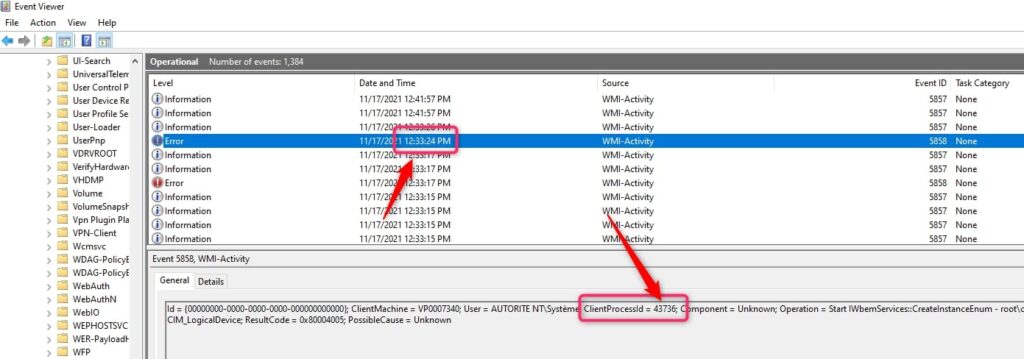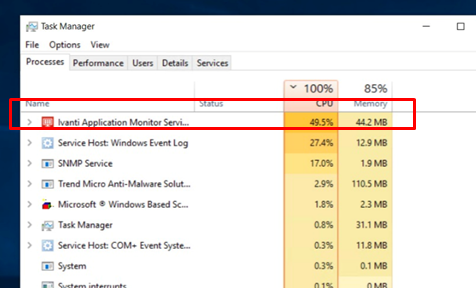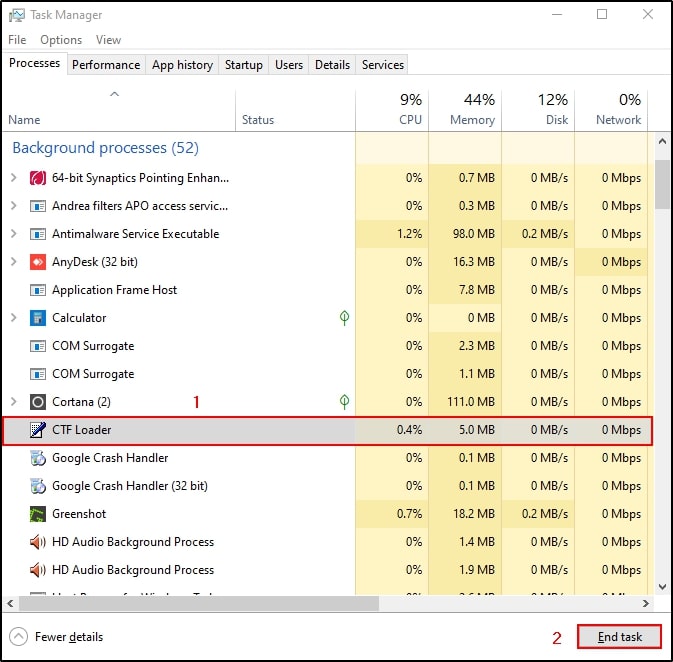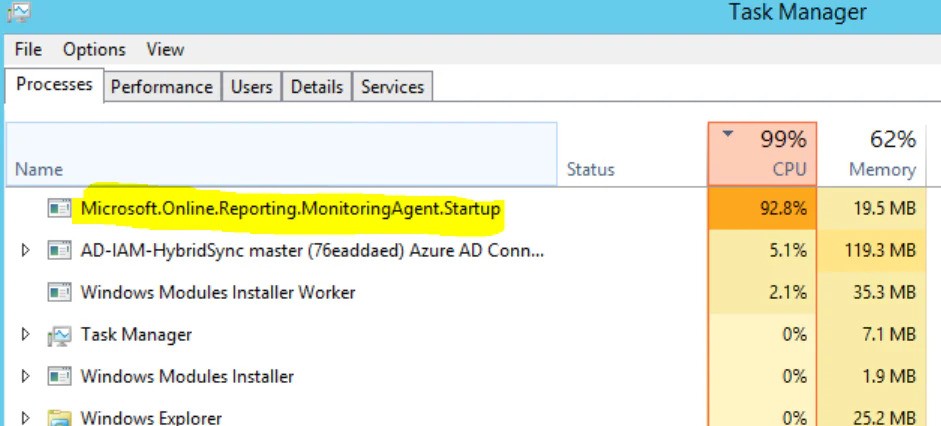If you’ve noticed your computer running slower than usual and using a lot of CPU, one possible culprit could be the Inventory Agent.
Inventory Agent High CPU refers to excessive CPU usage caused by the Inventory Agent process on your system. It can slow down performance but can be fixed by adjusting settings, updating software, or disabling unnecessary background tasks.
In this article, we’ll explore the Inventory Agent, why it may cause high CPU usage, and, most importantly, how you can fix the issue to improve your computer’s speed and efficiency.
Understanding Inventory Agent Windows 10 High CPU
The Inventory Agent is a tool in Windows 10 that tracks hardware and software on your computer. It helps IT teams monitor systems for updates and maintenance.
However, this process can sometimes use too much of your CPU, slowing down your computer. High CPU usage can cause your system to lag, overheat, or become unresponsive.
By understanding how the Inventory Agent works, you can identify and fix problems to improve your computer’s performance and make it run smoothly again.
1. Causes of Inventory Agent Windows 10 High CPU

High CPU usage from the Inventory Agent can happen for several reasons:
- Outdated Drivers: Old or incompatible drivers can cause conflicts, increasing CPU load.
- Software Conflicts: Certain apps may not work well with the Inventory Agent, leading to excessive usage.
- Background Processes: Too many programs running at once can drain CPU resources.
- Frequent Scans: If the agent scans too often, it may overwhelm your CPU.
- Misconfigured Settings: Incorrect system settings can cause unnecessary CPU strain.
Identifying the cause is key to fixing the issue.
2. Troubleshooting Inventory Agent Windows 10 High CPU
If the Inventory Agent is causing high CPU usage, try these simple steps:
- End Task: Open Task Manager, find “Inventory Agent,” right-click, and select End Task to stop it temporarily.
- Update Drivers: Check for and install the latest driver updates.
- Limit Scans: Adjust the scan frequency to reduce CPU usage.
- Disable Background Apps: Use Task Manager to stop unnecessary programs.
- Run a Malware Scan: Check for viruses that may be overloading your system.
These steps can help restore your computer’s speed.
3. Best Practices to Prevent High CPU Usage
Preventing high CPU usage by the Inventory Agent requires a proactive approach:
- Keep Windows Updated: Install updates regularly to fix bugs and improve system performance.
- Update Drivers: Ensure all hardware drivers are up-to-date for smooth operations.
- Monitor CPU Usage: Use tools like Task Manager to keep an eye on processes.
- Limit Startup Programs: Disable unnecessary programs from launching at startup.
- Run Maintenance Checks: Clean up temporary files and scan for malware regularly.
These habits can keep your computer running efficiently.
Also Read: Process Lasso Error Setting Process CPU Affinity – Read Out
Mitigating Inventory Agent Windows 10 High CPU
1. Check for Windows Updates
Regular updates are essential for keeping your computer optimized. Windows updates often fix bugs and improve performance, including issues caused by Inventory Agent.
Go to Settings > Update & Security > Windows Update and check for updates. Install any available updates to ensure your system has the latest fixes and improvements for better CPU management.
2. Investigate Windows Services
Some Windows services may not be essential and could cause high CPU usage. Open the Services app by pressing Windows + R, typing services.msc, and press Enter.
Review the list of running services and disable or modify unnecessary ones. Be careful not to stop critical services to maintain your computer’s stability and functionality.
3. Consider Third-Party Tools
If manual fixes don’t work, try third-party optimization tools like CCleaner or Advanced SystemCare. These tools help identify and resolve system performance issues, including high CPU usage.
They can optimize background processes, clean junk files, and provide additional diagnostics to ensure your computer runs efficiently and smoothly.
Troubleshooting High CPU Usage in Windows 10 Inventory Agent
Step 1: End the Inventory Agent Process
Open Task Manager by pressing Ctrl + Shift + Esc. Locate Inventory Agent under the Processes tab, right-click on it, and select End Task. This will stop the process temporarily and may reduce CPU usage.
Step 2: Update Device Drivers

Outdated or incompatible drivers can lead to high CPU usage. Check for updates by going to Device Manager or using Windows Update to install the latest drivers for your hardware. Updated drivers help improve system stability and performance.
Step 3: Adjust Inventory Agent Settings
If the agent’s scanning frequency is too high, it may be overloading your CPU. Open the Inventory Agent settings and reduce the frequency of scans. This will help minimize CPU strain while keeping the system monitored.
Step 4: Disable Unnecessary Background Processes
Check for any unnecessary programs running in the background that might be consuming CPU resources. Open Task Manager to view and disable non-essential processes. This helps free up CPU power so that the Inventory Agent can function efficiently.
Step 5: Scan for Malware
Malware can sometimes disguise itself as a legitimate process, including the Inventory Agent. Run a complete scan with your antivirus software to ensure your system is free of malware that could be causing excessive CPU usage.
Step 6: Uninstall Conflicting Software
Sometimes, software conflicts can lead to high CPU usage. Uninstall any recently installed programs that may be causing issues with the Inventory Agent. This can resolve disputes and reduce CPU load.
Step 7: Check for Windows Updates
Ensure your system is running the latest version of Windows. Updates can fix bugs, enhance performance, and improve system compatibility. Go to Settings > Update & Security > Windows Update and install any pending updates.
Step 8: Seek Professional Help
If the problem persists after trying all the above steps, it might be time to consult a technician or Microsoft support. They can provide specific solutions tailored to your system’s configuration and help resolve the high CPU usage issue.
Must Read: Baldur’s Gate 3 High CPU Usage – [Try These Fixes]
Inventory agent high CPU Flexnet
Flexnet Inventory Agent can use a lot of CPU power when scanning software and hardware data. This usually happens if the scans are frequent or if there’s a conflict with other programs. You can reduce CPU usage by adjusting scan frequency or ending the task.
Inventory agent high CPU usage
The Inventory Agent consumes too many resources while scanning or monitoring, causing high CPU usage. To fix this, try reducing the scan frequency, ending unnecessary background processes, or updating drivers to improve system performance and reduce load.
Inventory agent high CPU Windows 10
When the Inventory Agent in Windows 10 uses too much CPU, it can slow down your system. To fix it, check for updates, reduce scan frequency, and disable unnecessary background processes. These steps help improve overall system performance.
SentinelOne agent high CPU usage

SentinelOne can sometimes cause high CPU usage due to active monitoring or excessive background processes. If you experience slow performance, try adjusting the agent’s settings, updating it, or disabling other resource-heavy applications to reduce CPU load.
Inventory Agent Windows
The Windows Inventory Agent collects system data for IT purposes, but it can use too much CPU during scans. To improve performance, adjust scan intervals, update your drivers, and limit unnecessary background tasks. These steps can help optimize CPU usage.
SentinelOne agent high memory usage
SentinelOne Agent may use a lot of memory, especially when scanning for threats or during heavy system usage.
To reduce memory usage, try adjusting scan settings or uninstalling unnecessary programs that might be consuming resources along with the agent.
Sentinel agent worker high disk usage
The Sentinel Agent Worker can cause high disk usage when it processes data or scans files. To fix this, try updating the software, reducing scan frequency, or clearing unnecessary files. This will help improve disk performance and reduce slowdowns.
You Should Know: Plex Media Scanner High CPU – Common Causes And Fixes!
lsiagent.exe high CPU usage
Lsiagent.exe can use a lot of CPU when it runs background processes related to storage management. To reduce this, you can update your drivers, adjust settings, or stop unnecessary processes. This will help your system run more efficiently and smoothly.
High CPU usage during inventory
High CPU usage during inventory scans can happen when the system is processing too many tasks at once. To fix this, you can reduce the scan frequency or stop other unnecessary background processes to lessen the load and improve performance.
Dell OpenManage Inventory Agent (DSIAPC) High CPU Usage
Dell OpenManage Inventory Agent can use a lot of CPU resources if it runs frequent scans or manages a lot of devices.
To reduce CPU consumption, you can try adjusting the scan settings, updating the agent, or closing other background applications.
LANDesk Agent high CPU Usage (ldiscn32.exe).
LANDesk Agent (ldiscn32.exe) can use a lot of CPU when running scans or processing a large number of tasks. Try reducing scan intervals, updating the agent, or ending unnecessary background tasks to decrease CPU load and improve system speed.
Inventory scans causing high CPU utilization
Inventory scans can lead to high CPU usage when too many items are being processed at once. To reduce this, adjust scan settings to run less frequently or limit the scope of scans to essential devices and data, improving overall system performance.
High CPU usage on Windows 10 clients by SMS-Agent-Host
The SMS-Agent-Host process on Windows 10 clients can use a lot of CPU during inventory tasks. To lower CPU consumption and speed up system performance, try reducing the inventory frequency, optimizing network settings, or ending unnecessary processes.
The agent is using a large amount of CPU, is there anything I should check?

If an agent is using too much CPU, check for outdated drivers, adjust its scan frequency, or disable unnecessary background tasks. Also, verify that no conflicting software or malware is affecting its performance, leading to high CPU usage.
SCCM Hardware Inventory at WMI Class SMS_InstalledExecutable takes hours to complete
If the SCCM hardware inventory at WMI class SMS_InstalledExecutable is taking hours, it could be due to too many installed applications or large datasets. To resolve this, limit the inventory scope, optimize the WMI queries, and ensure the system is updated.
FAQs
1. What is Inventory Agent?
An inventory agent collects and manages information about software and hardware on a system to help IT administrators track resources.
2. How Do I Fix My CPU Usage So High?
To fix high CPU usage, close unnecessary programs, update drivers, check for malware, and adjust system settings.
3. How Much CPU Does SentinelOne Use?
SentinelOne uses varying amounts of CPU depending on the scanning and monitoring processes. It typically uses moderate CPU when active.
4. What Does High CPU Usage Alert Mean?
A high CPU usage alert means that your computer’s processor is being overused, which can slow down performance or cause issues.
5. Why Is My CPU Usage So High When Nothing is Running?
High CPU usage with no running programs could be due to background tasks, outdated drivers, or malware-consuming resources.
6. How Do I Clean My CPU Usage?
To clean CPU usage, close unused programs, update software, run a malware scan, and turn off unnecessary background tasks.
7. Is 100% GPU Usage Bad?
100% GPU usage isn’t always bad, especially during gaming or rendering, but it can cause overheating or slowdowns if prolonged.
8. What Does an Inventory Service Do?
An inventory service tracks hardware and software on a network, collecting data for IT management, updates, and audits.
9. What Does FlexNet Inventory Agent Do?
FlexNet Inventory Agent scans systems to collect data on installed software, helping organizations track software usage and licensing compliance.
10. What Does Inventory Control Do?
Inventory control manages stock levels, tracks items, and ensures that goods are available when needed, preventing shortages or overstock.
Conclusion
In conclusion, high CPU usage caused by the Inventory Agent can significantly slow down your system, but it’s manageable. By understanding its causes and applying the proper troubleshooting steps, you can reduce CPU load and improve system performance. Regular maintenance, updates, and careful monitoring are key to smooth operation.





